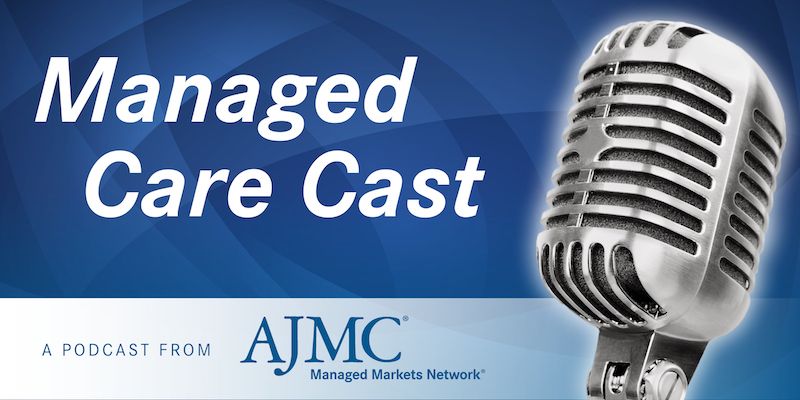Video
Characteristics That Help Diagnose COPD
Common symptoms and triggers of disease that may suggest chronic obstructive pulmonary disease versus other conditions such as asthma.
Transcript
Neil B. Minkoff, MD: What are the common signs and symptoms that you’re looking for when you see a patient and suspect COPD [chronic obstructive pulmonary disease]? And what do you anticipate as triggers to exacerbate it?
Frank C. Sciurba, MD, FCCP: The initial presentation in COPD often occurs in individuals who are still smoking. In COPD, over 80% of the cases in this country, not necessarily around the world, are related to tobacco smoking. When they’re smoking, they often don’t say, “I’m short of breath” or “I have symptoms,” because they know what the next response is: “You need to quit smoking.” And they recognize that. But also, patients often don’t even recognize it themselves. If they cough, they think it’s a smoker’s cough. They begin withdrawing from activities rather than saying they’re short of breath. They don’t challenge themselves. They stop doing things. When they go to the mall, they drive around until they find a parking place right next to the door rather than walk across the parking lot.
Often 1 of the first things you need to ask is not just, “How are you doing? Are you short of breath?” But instead, “What are you doing? Are you just withdrawing from activity? Are you sitting on the sofa? You’re no longer golfing. You’re no longer getting out with your children. You’re starting not to shop on your own.” And that, often, is the first sign. Once it is recognized and they can no longer deny it, shortness of breath, cough, sputum production. Often, not all the symptoms together. Often, individuals will present differently. Chest tightness. Wheezing actually isn’t all that common in COPD, except during flare-ups. But these are the types of classic things that can be experienced in these patients. Chest tightness.
Byron Thomashow, MD: I want to stress what Frank said, because you asked before, Neil, about spirometry, and I know we’re going to come back to that. But if you look at the recommendations, the repeated recommendations of the United States Preventive Services Task Force stress that spirometry is indicated only for those people who are at risk and have symptoms. And the problem with that is what Frank just said: Many people self-diagnose and self-treat. They say to themselves, “I’m getting old. I’m out of shape. I’m overweight,” and they cut back on their activity level. In that 5-, 6-, 7-, 8-minute visit you have with your primary care provider, where there are multiple medical issues you need to discuss, if they ask 1 question about the breathing and say, “How’s your breathing, Frank?” Frank might say, “It’s not bad, doc,” because he’s not doing anything.
Neil B. Minkoff, MD: So when he says it’s not bad, you’re looking further out than he is, right, from your example? And so what are you concerned about in terms of long-term complications? And then, also, systemic manifestation beyond just shortness of breath?
Byron Thomashow, MD: I can certainly give you some thoughts on that. I would stress with you, Neil, that it comes down to—as it often does in medicine—asking the right questions. Because if you don’t ask the right questions, you’re going to get the wrong answers. A better question than, “How are you breathing, Jack?” might be, “How’s your breathing compared with a year ago? Can you do what you could do a year ago? Can you do what you want to do?” Those sort of things give you a much broader issue and much more of a take of where you are. As far as your question is concerned, COPD, like many chronic diseases, is associated with multiple other systemic manifestations. I’m sure that Frank and Maria would agree. You can’t treat a patient with COPD by just treating their COPD. You have to treat the person who has that disease, because otherwise you will not get to where you need to go.
Neil B. Minkoff, MD: Let me ask you a question. In your clinical experience—not you personally, but what you see the fellows do, other pulmonologists do, and so on—are people asking, “What can’t you do this year that you could do at our last visit?” or “What have you withdrawn from?” Do you think that’s part of the work-up yet?
Frank C. Sciurba, MD, FCCP: Is it commonly practiced? Probably not. Part of it is private practitioners. Primary care doctors are so busy that somebody says, “That’s not a problem.” They don’t dig and discover that. I can’t tell you how many patients I’ve picked up who I know have had their disease for years and years and years. They come in with advanced-level disease, and you know they had it 5 years ago. And they’ve been seeing primary care doctors or, in some cases, other specialists, and it hasn’t been discovered. Or they’ve gone to a cardiologist who focuses on their minimal coronary artery disease and doesn’t recognize that they have significant COPD that needs to be treated and may be the primary problem and the reason they present to the cardiologist.
Newsletter
Stay ahead of policy, cost, and value—subscribe to AJMC for expert insights at the intersection of clinical care and health economics.





